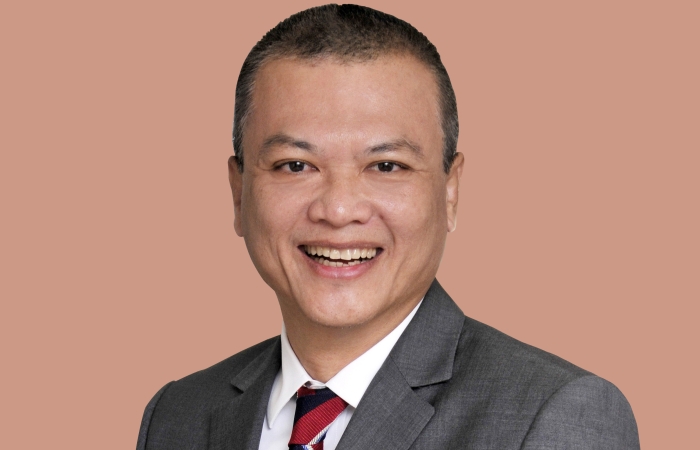Chalermsak Suranant, Director for Tourism Authority of Thailand for Dubai and Middle East, has become one of the most prominent tourism board professionals driving Thailand and its tourism products to incredible heights in its vision to make it a top tourist destination.
TT Bureau
Early years
Born in Chiang Mai, the largest city in north Thailand and home to Loy Krathong Festival or The Festival of Lights, Chalermsak Suranant has been in the forefront in terms of tourism promotions for his country in the Middle East.
Suranant started his primary education at Montfort College and attended high school at Yupparaj Wittayalai School. In 1975, he entered college and obtained Bachelor of Arts at Faculty of Economics, Chiang Mai University. In 1991, he began his career in Tourism Authority of Thailand as Assistant Director of Tourism Authority of Thailand, Chiang Mai Of- fice for two years. Afterwards, he was assigned as TAT Assistant Director for New York office from 1993 to 1997. In 2004, he became the Director of TAT Hong Kong office until 2008. During the same year, he went back to Chiang Mai to head TAT Chiang Mai office until 2012 before heading to Dubai in 2012 to lead TAT Dubai and Middle East market until present time.
Accomplishments
Suranant has received numerous awards such as the Excellent Brand of Tourism Paradise Award in 2007, Excellent Tourism Organisation Award (Excellent Tourism Department) from Hong Kong Leaders Choice Brand Award 2008 Event, Bangkok – Best City for Leisure in Asia Pacific between 2006-2008: Winner in Chinese New Year in Cathay Pacific Chinese New Year Night Parade and 2008 the Most Vibrant Travel Destination in Sport Tourism by X Life Magazine in X Life Sport Awards 2008 Event.
Determined for success
Suranant has been instrumental along with his team to ensure that there are more visitors to Thailand from the Middle East right throughout the year. From January 1-December 31, 2016, Thailand welcomed 585,633 tourists from the Middle East including Iran, generating an income of more than 40 million Thai baht, a 15 per cent increase compares to same time last year.
The top five tourism spending countries in the Middle East region are the UAE, Oman, Kuwait, Bahrain and Qatar.
Designed to fit in with the “Year of Sustainable Tourism Development” proclaimed by the UN World Tourism Organisation (UNWTO) for 2017, the “Unique Thai Local Experiences” campaign is being extensively publicised by the Tourism Authority of Thailand (TAT) at the Arabian Travel Market 2017, the largest travel trade show in the Middle East region being held from April 24 to 27, 2017, at Dubai World Trade Center, Dubai, UAE.
TAT Director for Dubai and Middle East market commented, “We are extremely happy to announce that TAT Middle East office received a 13 per cent increase in tourist arrival in 2016 compared to 2015. In 2017, we aim at increasing this number and plan to attract more tourists during the green season which will fall from May-August.”
Suranant and his efficient team from the Thailand tourism board in Dubai carry out a very good campaign to entice visitors from Dubai and other emirates with various interesting events. Recently they introduced the destination as the most affluent for golfers in Abu Dhabi, followed by a summer promotion campaign in one of the significant shopping malls in Dubai in order to encourage more visitors to try out new destinations within Thailand like Chiang Mai. Thailand’s “Rose of the North” is a cultural and natural wonderland with ethnic diversity, a multitude of attractions and welcoming hospitality.
Chiang Mai literally means “new city” and has retained the name despite celebrating its 700th anniversary in 1996. King Meng Rai the Great founded the city as the capital of the Lanna Kingdom on Thursday, April 12 1296 around the same time as the establishment of the Sukhothai Kingdom. King Meng Rai even conferred with his friends, King Ramkhamhaeng of Sukhothai and King Ngam Muang of Phayao before choosing the site where the capital of the Lanna Kingdom was to be founded. Henceforth, Chiang Mai not only became the capital and cultural core of the Lanna Kingdom, it was also to be the centre of Buddhism in northern Thailand. King Meng Rai himself was a very religious leader who even founded many of the city’s temples that remain important to this day. Chiang Mai is one of the few places in Thailand where it is possible to experience both historical and modern Thai culture coexisting side by side: the city features centuries-old pagodas and temples next to modern convenience stores and boutique hotels.
This year TAT aims to offer “Value for Experiences” to travellers coming to the Kingdom by focusing on “Unique Thai Local Experiences” to the world. In line with the Thailand 4.0 model, TAT will highlighting a valuebased economy driven by innovation and looking to be a creative economy delivering creative tourism. TAT has also initiated the LINK project in which ‘L’ represents Local Experiences; ‘I’ for Innovation; ‘N’ for Networking and ‘K’ for Keeping character. This is aimed to promote the local tourism in various communities in Thailand; such as, Ban Na Ton Chan Community in Sukhothai province, Kram Sakon in Sakon Nakhon province, Ban Nam Chiao Ecotourism Community, Trat province, and Ko Klang Community, Krabi province.
 TravTalk Middle East Online Magazine
TravTalk Middle East Online Magazine






